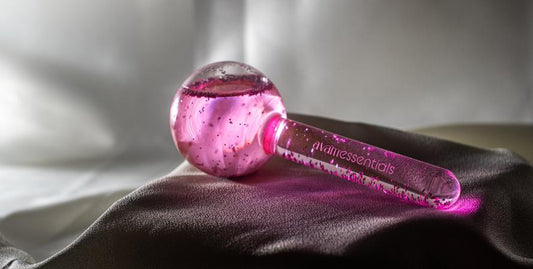
Learn the art of "skin icing" to attain a radiant and luminous complexion that exudes the ultimate glow
Do you want to achieve a radiant and luminous complexion that exudes the ultimate glow? If so, then it's time to learn the art of skin icing. This simple yet effective technique involves applying a cold object, such as ice roller, to the skin in order to achieve a range of skincare benefits. In this blog post, we'll explore how to master the art of skin icing and the benefits it can provide. So let's dive in and discover the power of skin icing!
The Benefits of Skin Icing
Skin icing offers a range of benefits for the skin, including
Reducing inflammation: The cold temperature of the ice can help to reduce inflammation and redness in the skin, making it ideal for those with sensitive or acne-prone skin.
Shrinking pores: face Icing the skin can help to shrink the size of pores, making them less visible and reducing the likelihood of breakouts.
Improving circulation: The cold temperature can help to stimulate blood flow and promote a healthy, radiant complexion.
Enhancing product absorption: Icing the skin before applying skincare products can help to increase their absorption into the skin, making them more effective.
What you should know before icing your face
When done correctly,face icing can help reduce puffiness, water retention, and inflammation, minimize enlarged pores, and shape your face (upwards and diagonal, outward-facing strokes from the middle of your cheeks, upwards to the end of your cheekbones). Icing can also be done on top of a sheet mask or shortly before applying serum to help with product penetration.
If you have dry or eczematous skin, excessive icing will aggravate the disease because when the ice water evaporates, it takes with it the skin's natural moisture. Wrap the ice cube in a thin, soft towel and avoid putting it straight on your skin. Over-icing can cause ice burns, so exercise caution. Don't overdo it or leave it on your face for too long.

How should you ice your skin at home with ice globes?
If you're looking to improve the appearance and health of your skin, ice globes can be a great addition to your skincare routine. These small, handheld tools are designed to be frozen and then rolled over the skin to provide a range of benefits, including reducing inflammation, improving circulation, and brightening the complexion.
To begin, it's important to make sure your face is clean and free of makeup and oil. You can then place the ice globes in the freezer for at least an hour before using them. This will ensure that they are cold enough to provide the desired benefits.
Before using the ice globes, you can enhance their effects by applying a serum or moisturizer to your face. This will help to lock in moisture and nourish your skin while you're using the ice globes.
When you're ready to start, gently roll the ice globes over your skin using circular motions. Start at the center of your face and focus on areas that are prone to puffiness, such as the under-eye area and cheeks. Gradually work your way outward, rolling the ice globes over your forehead, temples, and jawline.
It's best to use the ice globes for a few minutes at a time, taking breaks if necessary. You can also alternate between cold and warm temperatures for additional benefits. For example, you can use the ice globes for a few minutes and then switch to a warm, damp cloth for a few minutes before switching back to the ice globes.
After you're done using the ice globes, apply a light moisturizer to help lock in moisture and keep your skin hydrated. This will help to ensure that your skin stays healthy and glowing.
Overall, skin icing with ice globes is a simple and effective way to improve the health and appearance of your skin. With regular use, you can reduce inflammation, improve circulation, and achieve a brighter, more youthful complexion. So why not give it a try and see the benefits for yourself?



